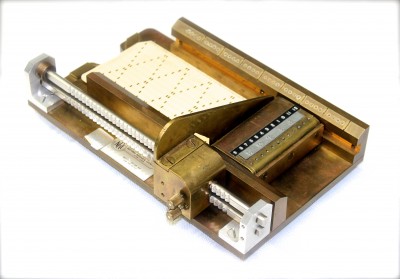Symposium and workshop on the evolution of technical aids for persons who are blind or partially sighted in Canada is underway, today March 3, at Carleton University. The symposium emphasizes both the brilliant inventors and makers of technology and also focus on the users of these technologies, showcasing how people and technology move forward together in design, development, education and accessibility.
The program is online. For updates follow #envisiontech.
Beth Robertson (PhD History, Carleton) is leading the research and design of the virtual exhibit Envisioning Technologies for Carleton’s Disabilities Research Group. The exhibit opens in the spring of 2016. For a preview, go to the Active History Exhibit. And read the introduction to the preview exhibit by History Chair, Dominique Marshal, a member of the Disabilities Research Group.
As she explains, “This project started when Carleton University Biomedical Engineering Professor Adrian Chan wanted to provoke his students’ imagination by restoring the wealth of forgotten inventions. He began developing an idea for a series of virtual exhibitions on history, technology and disability, and assembled what would become Carleton University’s Disabilities Research Group. This group joins a growing number of interdisciplinary initiatives at Carleton University, including a new minor in Disabilities Studies. The first exhibit we created was A Wheelchair History of Disability in Canada. The second is Envisioning Technologies, now under the direction of professor of social work, Roy Hanes, with research and design by historian Beth A. Robertson.”

An early model of a punch-card reader to be used by computer programmers who were blind. Developed by Dr. James Swail at the NRC, c.1968.